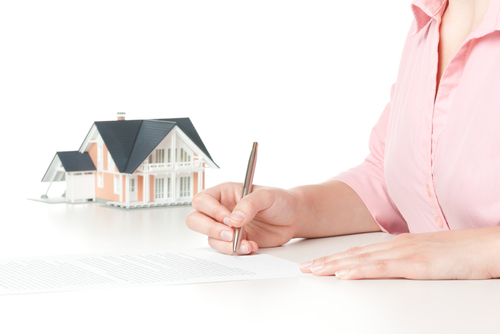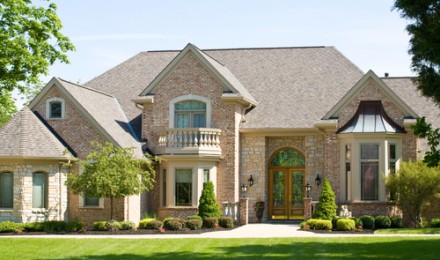Today, many homeowners are “upside down” on their home loans and they actually owe more on the homes than the houses are worth. This problem came about for a number of reasons, including falling property values and creative alternative financing arrangements such as balloon or interest-only mortgages. However, one major contributing factor to the mortgage crisis and ongoing problems with homeowners being underwater is that homeowners did not have enough equity in their homes as a result of a relaxation of rules related to maximum loan-to-value ratio. Today, many lenders are returning to tougher lending standards in order to avoid this problem in the future. As such, it is important to understand what maximum percentage of your home’s value you can borrow and still have a conforming mortgage.
What Percentage of Your Home’s Value Can You Borrow Up To and Still Have a Conforming Mortgage?
The general rule when it comes to home loans is that you can borrow up to 80 percent of the value of your home and still have a conforming mortgage. This is referred to as the maximum loan to value ratio. For example, assume that you had a home valued at $100,000. You would be able to borrow up to 80 percent of the home’s $100,000 value, or up to $80,000. You would need to pay the other $20,000 of the home as a down payment when you were purchasing the home, or if you were refinancing, you would need to keep this other $20,000 of equity in your home instead of taking it out as cash.
When determining the maximum loan-to-value ratio, the calculation is done based on the appraised value of the home, as determined by a licensed appraiser. This means if you are purchasing a home, the home’s value may not be equal to the value that the house is listed for or that you are purchasing it for. If you made an offer on a house for $110,000 but the home only appraised for $100,000, you would still only be able to borrow a maximum of $80,000 on the house in order to stay within confirming loan-to-value guidelines. If you wanted the home anyway, you would have to pay the extra $10,000 for a total of a $30,000 down payment since the lender would not lend that money to you.
It is also important to realize that while 80 percent is the maximum you can borrow for a conforming loan, sometimes lenders will expect you to put more money down, especially if the transaction is riskier for them. It is common in construction loans, for example, to have to put down at least 25 percent of the value of the home.
If you fail to put down the full 20 percent or to keep 20 percent of the equity in your home, you will be required to purchase insurance referred to as private mortgage insurance (PMI). This insurance protects the lender against a default- it does not protect you against falling property values or provide any payout to you. As such, PMI is widely considered to be a waste of money for borrowers and most people try to avoid PMI by staying within conforming loan guidelines. Other alternatives include taking a first mortgage for 80 percent of the value of a property and a second mortgage for any amount you need to buy the home above and beyond this 80 percent loan. These loans were traditionally called 80-20 loans since homeowners were borrowing 100 percent of the home’s value in order to get into a house. However, this is usually a bad sign that you are stretching yourself too thin and few lenders are willing to structure these 80-20 loans in today’s lending market.
Today, many homeowners are “upside down” on their home loans and they actually owe more on the homes than the houses are worth. This problem came about for a number of reasons, including falling property values and creative alternative financing arrangements such as balloon or interest-only mortgages. However, one major contributing factor to the mortgage crisis and ongoing problems with homeowners being underwater is that homeowners did not have enough equity in their homes as a result of a relaxation of rules related to maximum loan-to-value ratio. Today, many lenders are returning to tougher lending standards in order to avoid this problem in the future. As such, it is important to understand what maximum percentage of your home’s value you can borrow and still have a conforming mortgage.
What Percentage of Your Home’s Value Can You Borrow Up To and Still Have a Conforming Mortgage?
The general rule when it comes to home loans is that you can borrow up to 80 percent of the value of your home and still have a conforming mortgage. This is referred to as the maximum loan to value ratio. For example, assume that you had a home valued at $100,000. You would be able to borrow up to 80 percent of the home’s $100,000 value, or up to $80,000. You would need to pay the other $20,000 of the home as a down payment when you were purchasing the home, or if you were refinancing, you would need to keep this other $20,000 of equity in your home instead of taking it out as cash.
When determining the maximum loan-to-value ratio, the calculation is done based on the appraised value of the home, as determined by a licensed appraiser. This means if you are purchasing a home, the home’s value may not be equal to the value that the house is listed for or that you are purchasing it for. If you made an offer on a house for $110,000 but the home only appraised for $100,000, you would still only be able to borrow a maximum of $80,000 on the house in order to stay within confirming loan-to-value guidelines. If you wanted the home anyway, you would have to pay the extra $10,000 for a total of a $30,000 down payment since the lender would not lend that money to you.
It is also important to realize that while 80 percent is the maximum you can borrow for a conforming loan, sometimes lenders will expect you to put more money down, especially if the transaction is riskier for them. It is common in construction loans, for example, to have to put down at least 25 percent of the value of the home.
If you fail to put down the full 20 percent or to keep 20 percent of the equity in your home, you will be required to purchase insurance referred to as private mortgage insurance (PMI). This insurance protects the lender against a default- it does not protect you against falling property values or provide any payout to you. As such, PMI is widely considered to be a waste of money for borrowers and most people try to avoid PMI by staying within conforming loan guidelines. Other alternatives include taking a first mortgage for 80 percent of the value of a property and a second mortgage for any amount you need to buy the home above and beyond this 80 percent loan. These loans were traditionally called 80-20 loans since homeowners were borrowing 100 percent of the home’s value in order to get into a house. However, this is usually a bad sign that you are stretching yourself too thin and few lenders are willing to structure these 80-20 loans in today’s lending market.







